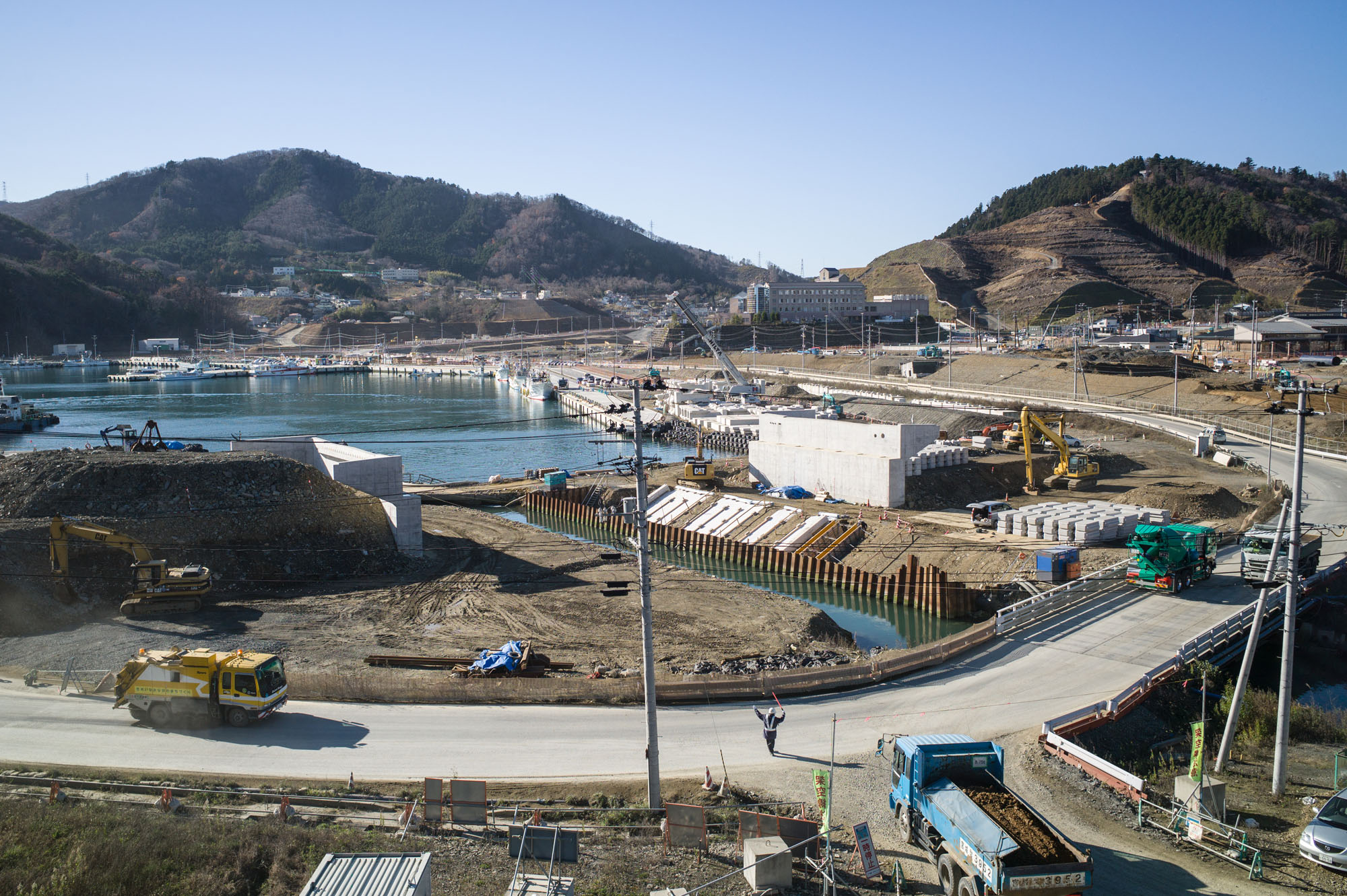If you stand on high ground overlooking the ocean at Onagawa in Miyagi Prefecture, you will see an almost perfectly sheltered harbor, its northern and southern sides enclosed by hills and the small island of Dejima near its mouth. In that topography lies the secret of the power of the tsunami that overwhelmed the town on March 11, 2011. Its strength concentrated and channeled by the harbor, it reached a height of 20 meters and, with a velocity of over 6 meters per second, it swept in to engulf, crush or drive everything in its path.
Seventy percent of the town's buildings were destroyed, including several constructed with reinforced concrete; many civil engineers had thought such structures were impervious to tsunami. The far-more-fragile human beings caught in the tsunami's path had little chance to escape. A total of 827 people died, and there was hardship and grief for those who survived. Nanami Kanda, a student whose testimony was published in a book titled "The Haiku of Onagawa First Junior High School Students: From that Day On" summed up what bereaved survivors endured in the following months:
Spring. The shorefront was covered in debris, and flies were everywhere. Whenever I saw that dirty shorefront, I thought of my grandfather's last moments, and I was filled with bitterness. My grandfather, who I lived with my whole life, was a local ward chief. After the earthquake, he had gone out to warn everyone to evacuate when the tsunami swallowed him up.



